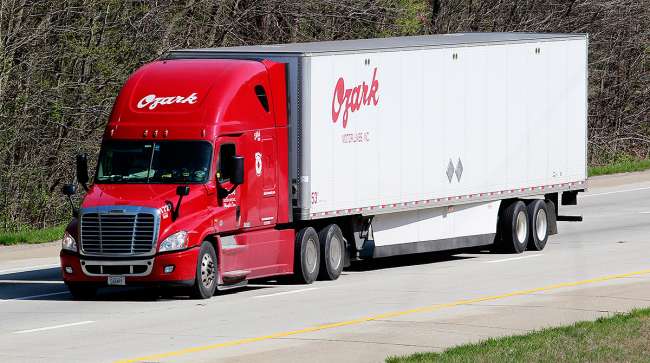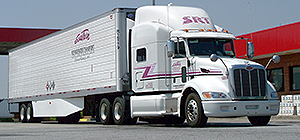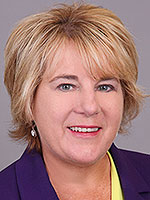Staff Reporter
Ozark Motor Lines Raises Pay as Trucker Shortage Creates Worker Demand

Two motor carriers are closing out the year with pay increases for drivers, capping off a 2018 trend that saw many fleets boost compensation in order to attract and retain drivers.
Ozark Motor Lines Inc. announced it will be raising wages and benefits for its drivers Jan. 1. Ozark officials said longhaul and regional driver pay will increase by 2 cents per mile for all dispatched miles.
The Memphis-based truckload carrier said because the Internal Revenue Service increased the maximum allowable daily per diem rate from $63 to $66, Ozark will increase the per diem mileage rate to 16 cents for all dispatched miles.
In addition, Ozark said it will increase discretionary matches of employees’ 401(k) contributions. The new rate will be 50 cents per dollar with a maximum match of $2,000 per year. And for the second year in a row, the company said there will be no increase in employee premiums for medical insurance.
Ozark serves the continental United States. It uses both company drivers and owner-operators. Their clients include FedEx and International Paper, according to a news release.

Southern Refrigerated Transport has had three driver pay increases in 15 months. (Russ MacNeil)
Meanwhile, Southern Refrigerated Transport Inc. announced its third pay increase and third benefits cost reduction in a little more than a year.
SRT officials said all mileage-based drivers will receive a 3-cents-per-mile pay increase beginning mid-January, as well as more reductions in employee health insurance costs for 2019.
It is the third pay increase in 15 months for drivers at the refrigerated carrier, which is based in Texarkana, Ark. SRT is a wholly owned subsidiary of Covenant Transport Services, which specializes in temperature-controlled carrier services.
Southern Refrigerated Transport ranks. No. 14 on the Transport Topics list of top refrigerated carriers.
These kinds of salary and benefit increases are strategies trucking companies have been using to attract drivers and keep the ones they have, according to Rebecca Brewster, president of the American Transportation Research Institute. It’s a trend that’s been going on for about five years because of the nationwide trucker shortage, she said.
Bob Costello, chief economist of the American Trucking Associations, believes the industry is short at least 50,000 drivers and that number is expected to climb as older drivers retire. To make matters worse, younger men and women are not entering the trucking workforce fast enough to replace retirees, meaning industry growth may not be met.
The national shortage of qualified truck drivers has been named the industry’s most pressing concern for two years in a row by ATRI.
Little surprise, then, that carriers are willing to pay them more.

Brewster
“What we have seen is a fairly steady increase in driver wage cost per mile and benefit cost per mile,” Brewster told Transport Topics. Research by ATRI showed 2017 (the last full year for which ATRI has data) saw drivers making 55.7 cents per mile, and 17.2 cents per mile in benefits. Per-mile wages are up 33.6% from 2012, when they were 41.7 cents per mile. Benefits were 11.6 cents per mile in 2012. In 2017, they were up 48.3%, to 17.2 cents per mile.
But trucking companies aren’t just using wage increases and perks to attract drivers. Brewster said bonuses for safety and on-time delivery have also been trending upward.
The average driver safety bonus is $1,317; the average on-time bonus is higher, at $2,542.
However, the average safety bonus was actually down 12.1% from 2016, when it was $1,499, according to ATRI numbers. But, perhaps because of online retail demand, the on-time bonus is up 30.6% from 2016, from $1,946.

